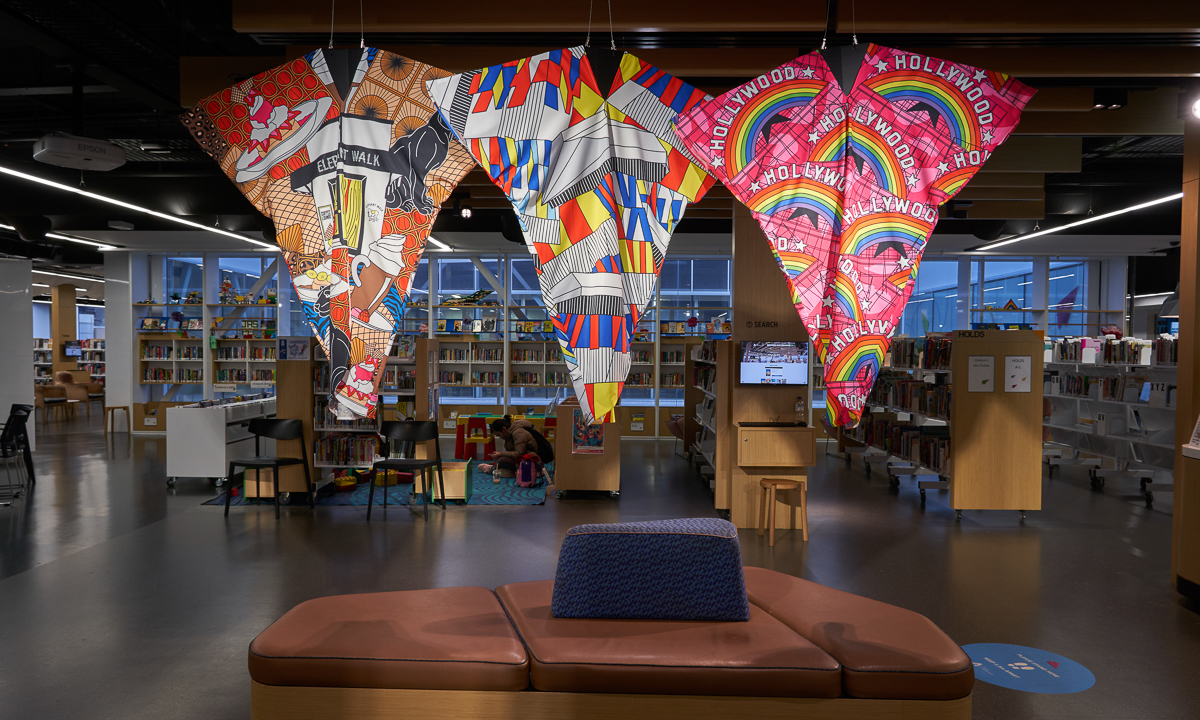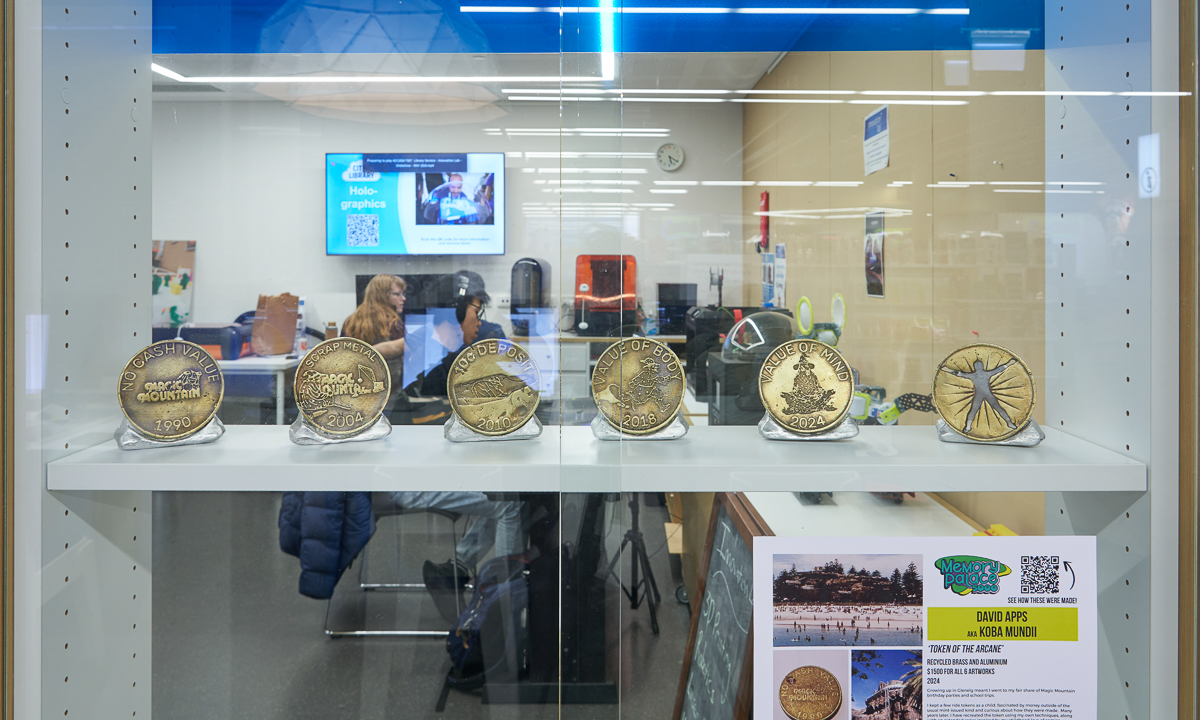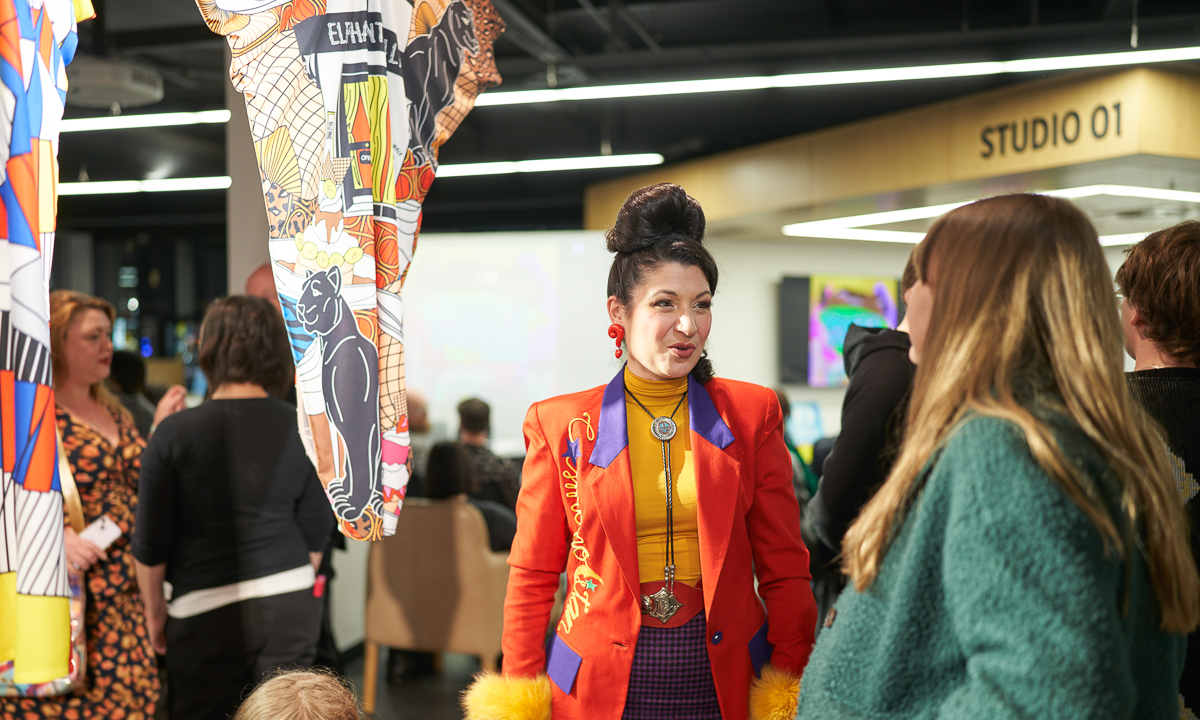CityMag visits the latest project from local powerhouse Frida Las Vegas and explores the power of nostalgic art.
Frida Las Vegas weaves nostalgia into art
When CityMag first stepped into the Adelaide City Library, amid the books and the quiet hum of activity, a wave of nostalgia washed over us.
The art pieces of the Memory Palace 5000 exhibition scattered throughout the space, transported me to places and buildings that no longer exist yet still linger in the city’s collective memory. Although this CityMag reporter wasn’t born and raised in Adelaide, the exhibition reminded me of my own city’s lost landmarks, evoking a deep, personal connection to a place I’ve left behind.
Curated by Stavroula Adameitis, also known by her vibrant moniker Frida Las Vegas, “Memory Palace 5000” is part of this year’s South Australian Living Artists (SALA) Festival.
The exhibition explores the themes of memory, architecture, and time, inviting viewers to reflect on the buildings and spaces that have shaped Adelaide’s identity.
Stavroula, who recently returned to Adelaide after living in Sydney for 15 years, was struck by the changes in the city she once knew.
“A lot of places I used to visit and spend time at are gone now,” she says.
“Those places and buildings have been knocked down to make way for new developments. It got me thinking about what happens to these buildings over time and what architectural value they hold.”
The idea of a ‘Memory Palace’ fascinated Stavroula because it touches on the universal experience of nostalgia and the power that architecture holds over our memories.
“We often take buildings for granted until they’re gone, but they live on in our minds, sometimes even more vividly than before,” she says.
Stavroula handpicked a group of mid-career artists who have each mastered their mediums to participate in the exhibition.
“I wanted artists to work in different mediums,” she says.
“The works in this exhibition range from ceramics, drawing, installation, moving images, multimedia, photography, print-making, sculpture, and textiles. It’s interesting to see how one central theme can be explored in so many different ways.”

Artwork by Donovan Christie in Memory Palace 5000.
The artists featured in “Memory Palace 5000” include Angus Adameitis, David Apps, Donovan Christie, Samantha Faehrmann, Leo Greenfield, Billie Justice Thompson, Amy Milhinch, Oakey, Simone Tippett, and Karina Ward. Each of them bring a unique perspective to the exhibition, contributing to rich memories and stories about Adelaide’s lost architectural treasures.
One of Stavroula’s contributions to the exhibition is a textile print that references the Elephant Walk, a beloved late-night coffee and dessert shop that once traded on Melbourne Street in North Adelaide.
“It was a very cozy place,” she reminisces.
“I used to work there in my 20s while I was still figuring out life. The café was special to me because I met and found a lot of my friends there. It just reminds me of a time when I was carefree and young. The interior was this quirky mix of African, Indonesian, and Hawaiian jungle settings—unique.”

Stavroula’s contribution to the Memory Palace exhibition, with the Elephant cafe-inspired work on the left.
Among the many striking pieces in the exhibition, Stavroula highlights a few that particularly resonate with her.
“I loved David Apps’ metal piece referencing Magic Mountain, which used to exist in Glenelg,” she says.
“He had a creative response to the theme by using the Magic Mountain tokens to tell a story of that lost place he visited in his childhood.”

David Apps ‘Token of the Arcane’ within Memory Palace 5000.
Another favourite is Karina Ward’s embroidered pieces about Egyptian culture, a longstanding favourite section of the South Australian Museum.
“I loved the way she recreated the murals of Egyptian culture using bright neon colours,” Stavroula says.
Curating the exhibition in a bustling place like the city library presented its own set of challenges.
“It’s a busy place during the day. You never see a blank wall because there are always people in front of it,” she says. “It’s a multi-use space, so we had to be strategic about where each piece would go.”
Despite these challenges, the response to the exhibition has been overwhelmingly positive. On opening night, the visitors were enthusiastic and engaged.
“People responded fantastically,” Stavroula says.
“I heard people saying, ‘oh, I loved that place, I went to that place,’ and others saying, ‘oh, I didn’t know it existed.’ It was a nice mix of education and nostalgia, which is exactly the response I was hoping for.”
For Stavroula, working with the other artists in the exhibition has been a rewarding experience.
“It was an amazing experience,” she says. “All the artists in this exhibition are mid-career artists. They’ve been in the industry for a long time, they’ve mastered their medium, and they know how to communicate with the audience.”

Stavroula at opening night of Memory Palace 5000.
She also credits the SALA Festival and the City of Adelaide for making the exhibition possible.
The project has not only reconnected Stavroula with like-minded artists but has also influenced her artistic journey.
“What it’s done is I met some amazing artists and reconnected with them, which inspired me a lot,” she says.
“It’s made me realise how interested I am in buildings and architecture, and how they influence our storytelling.”
As Adelaide continues to grow and change, Stavroula sees the evolution as largely positive but wishes for more creativity in the city’s new developments.
“I think changes are a good thing,” she says. “I just wish that some of the new buildings and structures had more of a creative outlook and material. Adelaide is growing, and it’s always changing for the better.”
Looking ahead, Stavroula has plans to continue exploring the themes of “Memory Palace 5000” in her future work.
“After this, I will be releasing a range of clothing inspired by the prints of Memory Palace,” she says.
“I want to do more textile prints based on the theme of lost architecture.”
Memory Palace 5000 is an invitation to rediscover Adelaide, walk through its forgotten streets, and relive the memories that once shaped the city. It’s available to view at the Adelaide City Library until September 20.




